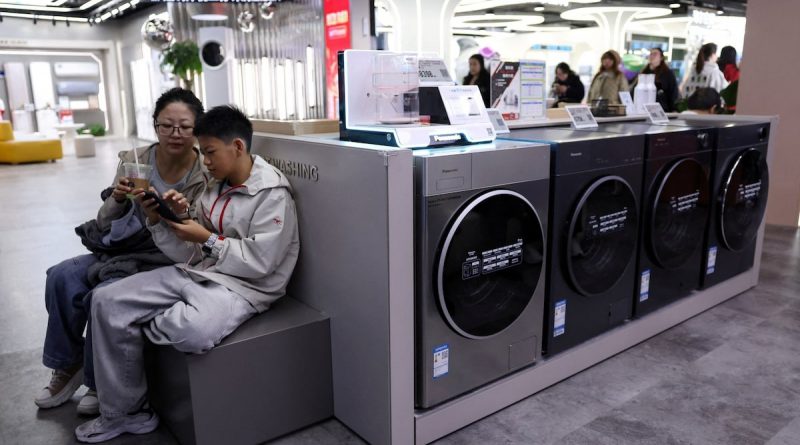Beijing’s Steady Course: China Maintains 5% Growth Target Despite Global Challenges
Beijing – China’s economy continued its steady trajectory in the third quarter of 2025, with gross domestic product (GDP) expanding 4.8% year-on-year, aligning with forecasts and keeping the world’s second-largest economy on track to achieve its 5% annual growth target.
While the pace marked a slight moderation from the previous quarter’s 5.2%, the figures underline China’s resilience amid shifting global conditions and domestic adjustments.
Economists view the data as a sign that China’s recovery remains intact, despite headwinds from a property market slowdown, trade tensions, and sluggish consumer demand.
The country’s strong industrial output and export diversification have helped sustain momentum, signaling Beijing’s ability to balance short-term challenges with its long-term policy goals.
According to the National Bureau of Statistics, the economy grew 1.1% quarter-on-quarter, surpassing expectations of 0.8% growth and reflecting continued improvement in production and investment activity.
Industrial production rose 6.5% in September, its highest level in three months, driven by manufacturing and high-tech sectors.
While retail sales growth eased slightly to 3.0%, policymakers remain focused on strengthening domestic consumption through gradual reforms, employment support, and measures to stabilize the housing market.
Analysts note that confidence is expected to improve as the government continues to emphasize sustainable and high-quality development rather than short-term stimulus.
Economists, including Lynn Song, chief economist for Greater China at ING, noted that the growth trajectory aligns well with policy goals. “With China on track to hit this year’s growth target, we could see less urgency for large-scale stimulus, allowing policymakers to focus on long-term structural reforms,” Song said.
Despite global uncertainties, China’s export performance has demonstrated adaptability and resilience. Although shipments to the United States fell 27% in September, exports to the European Union, Southeast Asia, and Africa surged by 14%, 15.6%, and 56.4%, respectively.
This diversification shows China’s growing engagement with emerging markets and its efforts to strengthen trade networks beyond traditional partners.
China’s manufacturing and innovation sectors continue to be pivotal in driving the economy. The upcoming 15th Five-Year Plan, currently under discussion by Chinese leaders, is expected to emphasize high-tech industries, green energy, and advanced manufacturing, reinforcing the nation’s ambition to transition towards a more innovation-driven economy.
Meanwhile, Beijing’s cautious approach to fiscal and monetary policy has aimed to balance growth and stability. Modest stimulus measures, such as targeted credit support for small businesses and infrastructure projects, have been implemented to bolster demand without adding excess debt.
The government’s broader objective remains long-term economic rebalancing—shifting from export- and property-led growth toward domestic consumption, technological advancement, and sustainability.
The recent policy discussions surrounding pension reform and housing market stabilization reflect this focus.
Observers also note that the ongoing political and economic dialogues between China and major economies, including the United States, may help ease trade frictions and foster a more stable environment for investment and growth.
A planned meeting between Presidents Xi Jinping and Donald Trump in South Korea is expected to provide an opportunity for both nations to recalibrate economic cooperation.
Despite the slower pace, the third-quarter data highlights positive fundamentals—steady output, diversified trade, and policy discipline—keeping China on a solid growth path.
The country’s capacity to manage short-term pressures while advancing long-term objectives continues to reassure investors and global markets.
As industrial production strengthens and policy support remains steady, China’s economic outlook for the final quarter of 2025 appears stable.
Analysts expect continued focus on innovation, green transition, and structural upgrades, ensuring that China remains competitive in a rapidly evolving global economy.
With growth anchored around 5%, China’s policymakers are taking a measured, forward-looking approach, prioritizing sustainability, resilience, and technological progress—key ingredients for long-term prosperity.



